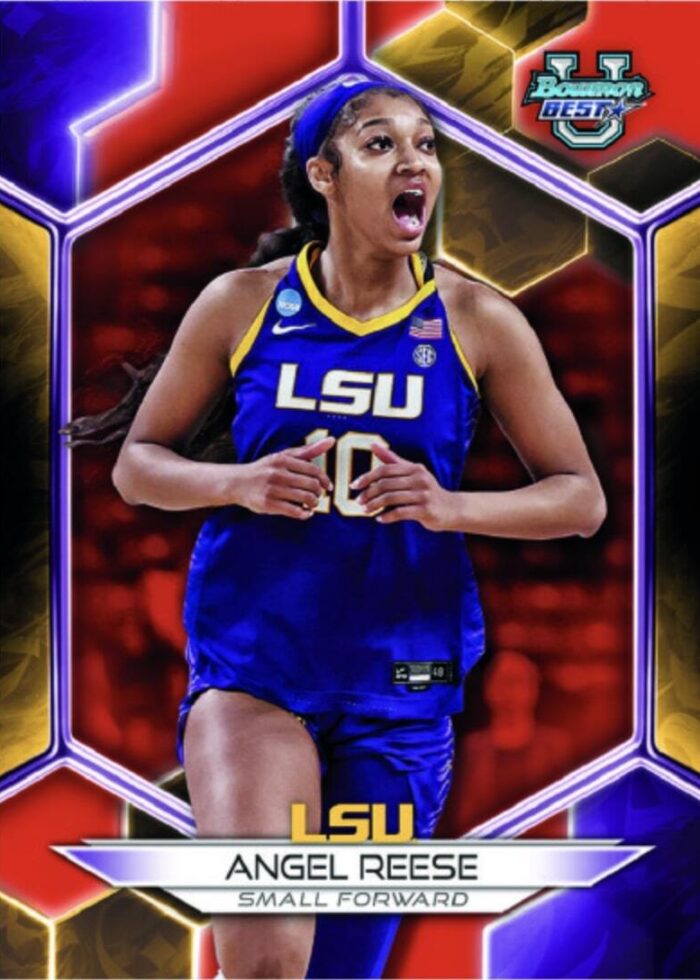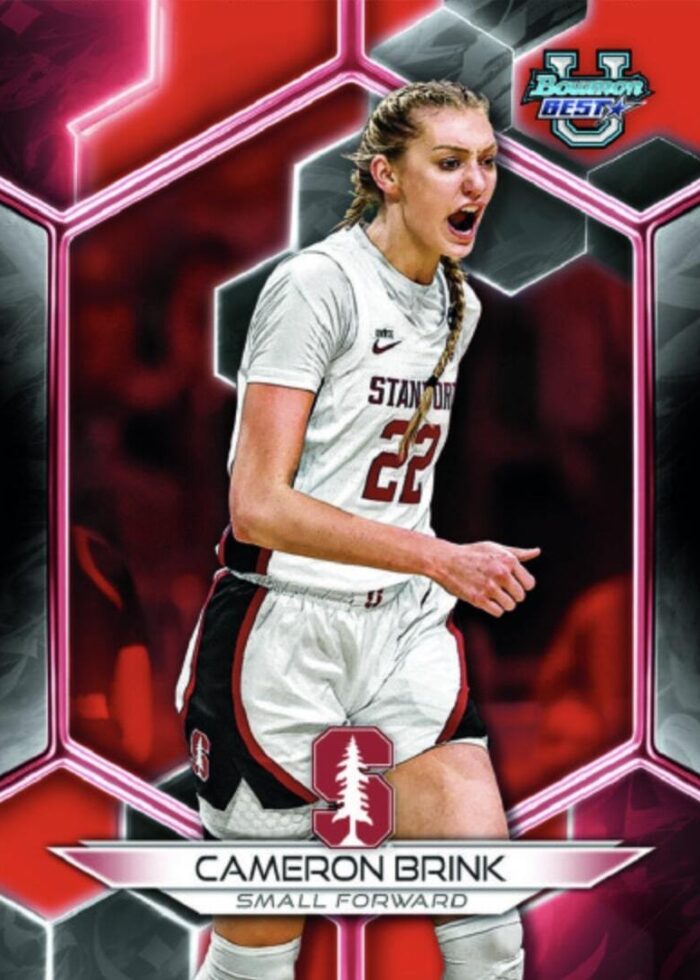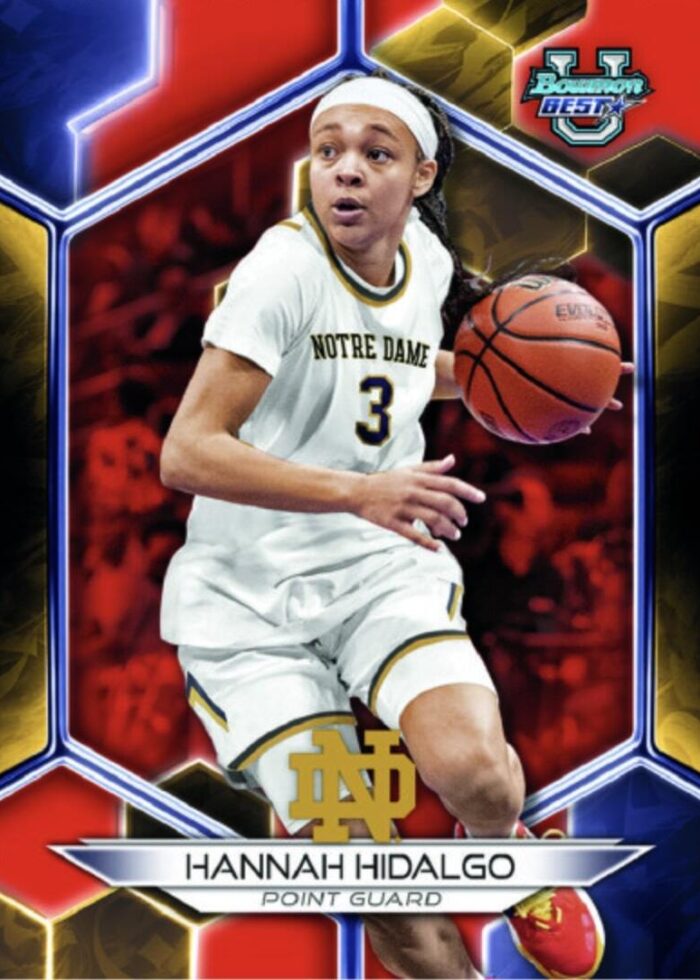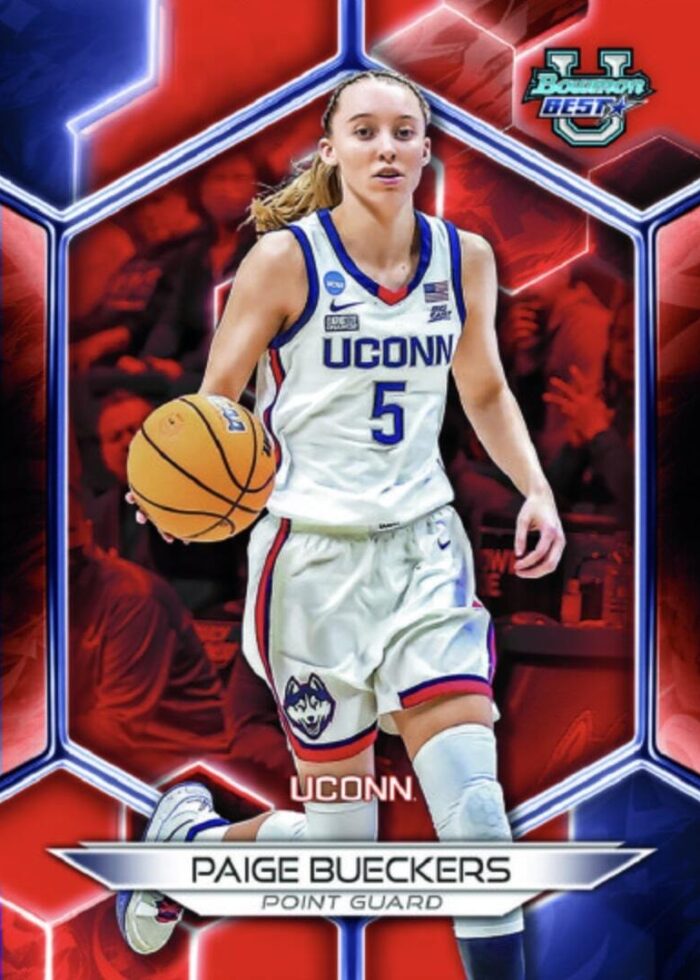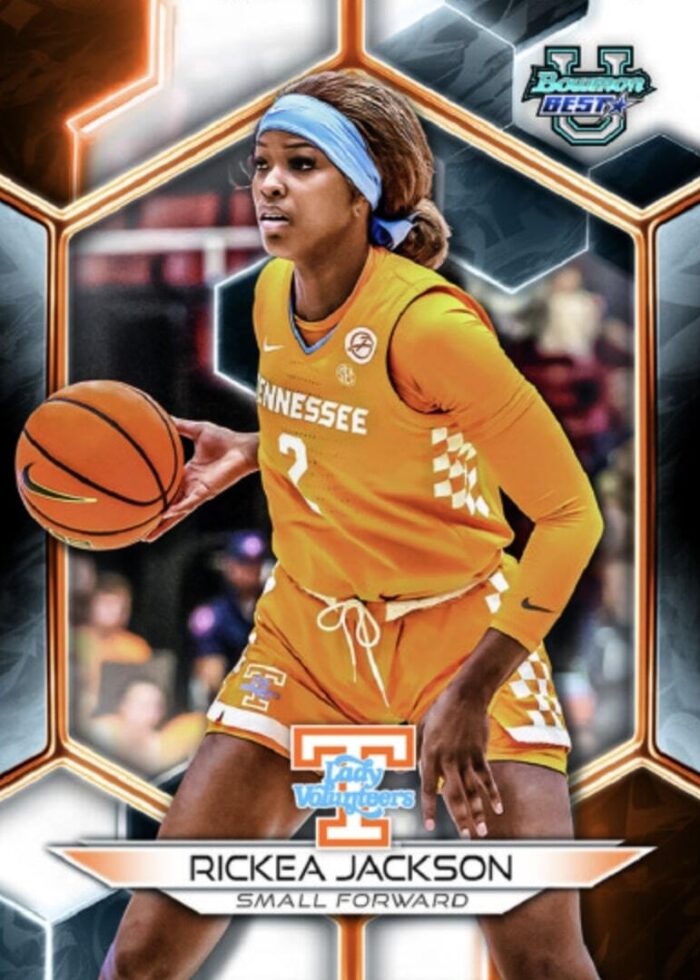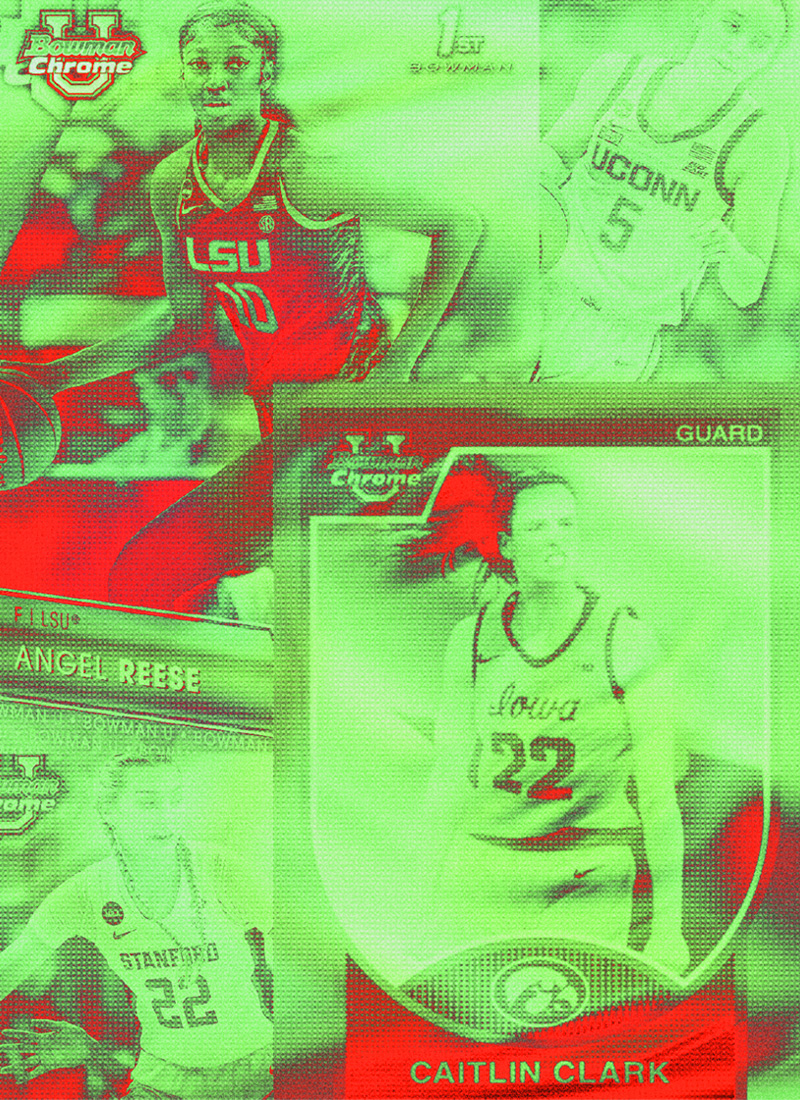
Title IX, NIL, the WNBA, and Beyond
Caitlin Clark recently sailed past Pete Maravich’s all-time NCAA scoring record, and her popular appeal continues to increase. In a move that surprised some fans who had hoped she would stay for a final year at the University of Iowa, Clark recently declared for the WNBA and will almost certainly be the first pick.
Clark’s popularity is reflected in an NIL deal that likely puts her in the top ten for all college hoops athletes, male or female. More extraordinary still, the recent closing bid at the PWCC January Premiere Auction on Clark’s 2022 Topps Bowman University Superfractor card settled at an astounding $78,000.

2022 Bowman University #50 Caitlin Clark Superfractor Auto 1/1
It is hard to overstate how much American culture has changed in the fifty years since Title IX was passed, and Clark’s career may be understood as one of the fruits of that landmark legislation. Still, it was not until 1982 that the NCAA recognized women’s college basketball, and the WNBA was not founded until 1996.
Trailblazers of Women’s Hoops
The question is whether Clark’s celebrity is an indicator of the further mainstreaming of women’s hoops. Like Taylor Swift, she sells out arenas wherever she goes, and at present, she is undoubtedly one of the most recognizable athletes in all of sports. If Clark can carry the Hawkeyes to a national championship game against the undefeated South Carolina team, it’s hard to imagine viewership lagging much behind the men’s final.
One of the reasons that Clark’s career is so fascinating is that there is little historical precedent. Serious fans may know about Cheryl Miller’s early career at the University of Southern California (1982-1986). Miller first made national headlines when she scored 105 points in a single high school game in 1982.
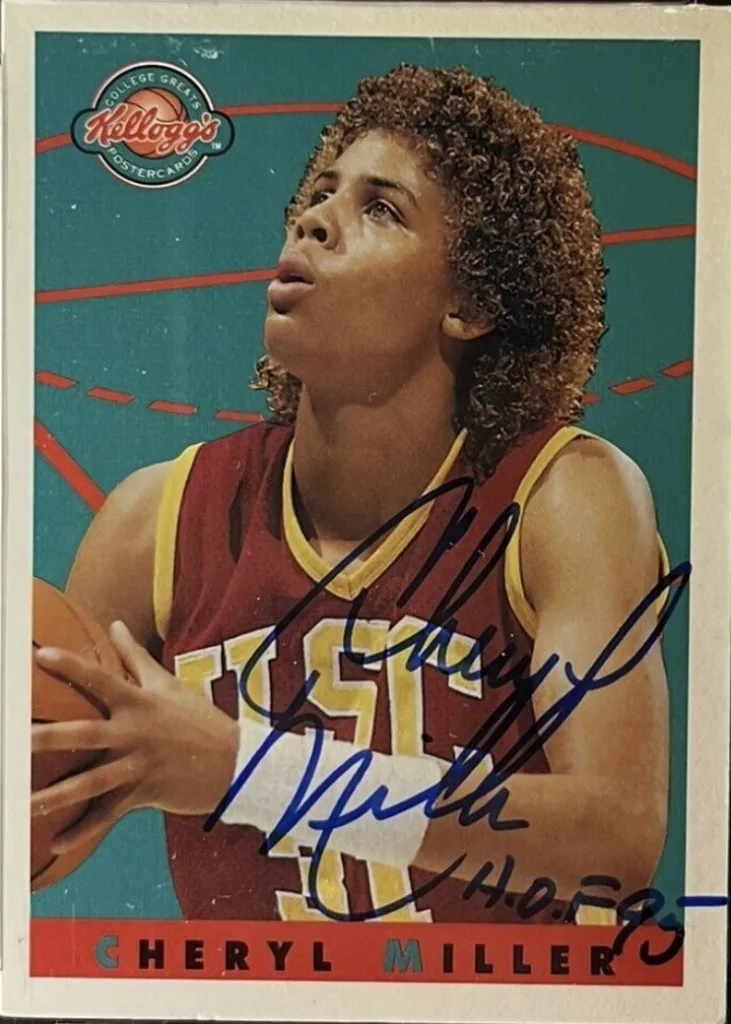
1993 Star Pics Kellogg’s College Greats Cheryl Miller, signed
But even when Sports Illustrated named Miller the top player in college basketball—men’s or women’s—no trading cards were printed to recognize women in college basketball. Although some of the leading female players of the 1980s, including Miller and Tennessee’s Bridgette Gordon, were honored with Team USA cards for the 1992 and 1996 Olympics, college players like the University of Connecticut’s hugely popular Rebecca Lobo were mostly ignored by major card companies through the 1990s.
Factors of Success For Women’s Hoops
To be sure, women’s college basketball has witnessed a remarkable surge in popularity, and a significant contributing factor has been the unprecedented rise in talent and skill among the players. The athletes competing in women’s college basketball have displayed an exceptional level of play, showcasing their athleticism and a deep understanding of the game. With the increasing investment in training programs, coaching staff, and facilities, these young women are now gaining the recognition they deserve, drawing more attention and interest from sports enthusiasts.
Another pivotal factor behind women’s college basketball’s growing popularity is the increased media coverage and exposure the sport has received. Television networks and online streaming platforms have recognized the value and excitement that women’s basketball brings to the table, leading to a significant uptick in broadcasting games and highlights. This expanded visibility has allowed (and encouraged) fans to follow their favorite teams and players more closely, fostering a stronger connection with the sport and contributing to its rising popularity.
Changing Culture and a Growing Appreciation
As every marketing student knows, creating demand for a product is essential in every industry. American sports fans are still learning the demand curve regarding women’s hoops—and women’s sports in general. What remains to be seen is whether the omnipresence of Caitlin Clark’s name and face will translate into a golden era for women’s college basketball. If, for instance, the average American sports fan is more likely to recognize Caitlin Clark than they are to know Shohei Ohtani, it does not necessarily follow that they can name Clark’s teammates.
In 2023-2024, Bowman Chrome U produced a beautiful set of cards honoring standout college basketball players, both male and female. Alongside Clark’s card, collectors will find the likes of Angel Reese of LSU, Connecticut’s Paige Bueckers, and Notre Dame freshman Hannah Hidalgo.
Challenges and Expectations
Limited broadcasting, fewer marketing initiatives, and disparities in media coverage have hampered the WNBA’s ability to reach a broader audience. Unfortunately, this lack of visibility has contributed to lower overall awareness and interest in the league.
The women’s basketball roster for this summer’s Paris Olympics has not yet been finalized, but it is unlikely that Caitlin Clark will be among them. If Clark carries her team to the final four, scheduling difficulties may make it impossible for her to participate in the Team USA mini camp, which will take play in Cleveland April 4-7. With or without Clark, the Olympic team should continue to boost the overall appeal of women’s basketball, and a set of cards representing the athletes would certainly be welcome.
Whatever is left of a glass ceiling for women’s college sports in America appears to be cracking. What Annika Sörenstam did for women’s golf in the 1990s, what Mia Hamm did for women’s soccer, Caitlin Clark is doing for women’s hoops. More importantly, Clark is raising the bar for future female athletes, and history is still young when it comes to women in sports. The future is bright and likely to be even more competitive.
